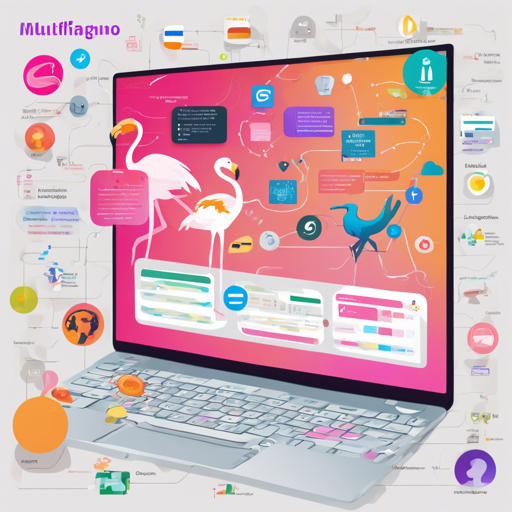Welcome to your comprehensive guide on getting started with Multilingual OpenFlamingo! This powerful model enables you to generate multilingual text conditioned on interleaved sequences of images and text, all without the need for special tokens to specify the language. Let’s dive into the installation process and how to use the model effectively!
Installation Steps
Follow these simple steps to install Multilingual OpenFlamingo on your machine:
- Clone the repository from GitHub:
git clone https://github.com/MatthieuFP/open_flamingocd open_flamingopip install --editable .
pip install numpy==1.26Model Initialization
Once installed, you’ll need to initialize the model. Here’s how:
python
from open_flamingo import create_model_and_transforms
model, image_processor, tokenizer = create_model_and_transforms(
clip_vision_encoder_path='ViT-L-14',
clip_vision_encoder_pretrained='openai',
lang_encoder_path='googlegemma-2b',
tokenizer_path='googlegemma-2b',
cross_attn_every_n_layers=1,
)Loading the Model Checkpoint
If you want to load the model checkpoint from the Hugging Face Hub, follow these steps:
from huggingface_hub import hf_hub_download
import torch
checkpoint_path = hf_hub_download('matthieufp/multilingual_open_flamingo', 'checkpoint.pt')
_
= model.load_state_dict(torch.load(checkpoint_path), strict=False)Generating Text with Multilingual OpenFlamingo
Now, let’s look at how to generate text based on interleaved images. Imagine a talented artist interpreting each picture and narratively weaving the visuals into a coherent story. Here’s how you can do it:
- First, load the images:
- Next, preprocess the images:
- Preprocess the text input:
- Finally, generate the text:
from PIL import Image
import requests
demo_image_one = Image.open(requests.get('http://images.cocodataset.org/val2017/00000039769.jpg', stream=True).raw)
demo_image_two = Image.open(requests.get('http://images.cocodataset.org/test-stuff/00000028137.jpg', stream=True).raw)
query_image = Image.open(requests.get('http://images.cocodataset.org/test-stuff/00000028352.jpg', stream=True).raw)vision_x = [image_processor(demo_image_one).unsqueeze(0),
image_processor(demo_image_two).unsqueeze(0),
image_processor(query_image).unsqueeze(0)]
vision_x = torch.cat(vision_x, dim=0)
vision_x = vision_x.unsqueeze(1).unsqueeze(0)tokenizer.padding_side = 'left'
lang_x = tokenizer(
[
'imageAn image of two cats.endofchunk',
'imageAn image of a bathroom sink.endofchunk',
'imageAn image of a'
],
return_tensors='pt',
)generated_text = model.generate(
vision_x=vision_x,
lang_x=lang_x['input_ids'],
attention_mask=lang_x['attention_mask'],
max_new_tokens=20,
num_beams=3,
)
print('Generated text:', tokenizer.decode(generated_text[0]))Troubleshooting Tips
If you encounter any issues while installing or running Multilingual OpenFlamingo, consider the following troubleshooting steps:
- Double-check your Python version; ensure compatibility with the libraries you are using.
- Make sure all required packages are correctly installed.
- If there are issues with torch tensors, verify that your image preprocessing steps are accurate.
- For any model loading issues, confirm that the checkpoint path is correct and the internet connection is stable.
- For more insights, updates, or to collaborate on AI development projects, stay connected with fxis.ai.
Conclusion
Setting up and using Multilingual OpenFlamingo opens up exciting opportunities in the realm of AI-driven multilingual text generation. By combining visual and textual data, this model can produce compelling narratives across various languages.
At fxis.ai, we believe that such advancements are crucial for the future of AI, as they enable more comprehensive and effective solutions. Our team is continually exploring new methodologies to push the envelope in artificial intelligence, ensuring that our clients benefit from the latest technological innovations.

